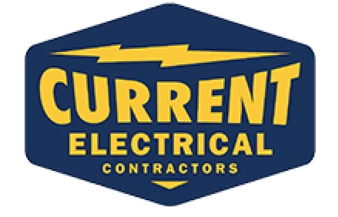Circuit breakers are the heart of any electrical system. They are the first line of defense against overload situations and short circuits. Most people don’t understand the difference between the two but that is where our electricians near Wilmette come in.
Overloaded Circuit
The overload situation occurs when too many current consuming devices are on the same circuit. Appliances, light fixtures, portable heaters, and hair dryers are some examples of high current consuming devices. Switches and circuit breakers, on the other hand, are not. For example, if you have a 15 amp circuit with 6 amps of lighting on that circuit and you plug in on a 1500 watt electric hair dryer, that hairdryer will draw 12.5 amps. This means there is a total of 18.5 amps on a 15 amp circuit breaker. The circuit breaker will trip and move to the tripped position. You can reset that circuit breaker all day, but if the electric hairdryer and the 6 amps of lighting are not unplugged the circuit will never hold them both. In order to reset the breaker, you need to switch the breaker to the off position from the tripped position and then back to on. This is a pretty common occurrence and most homeowners are able to determine which appliance is causing the overload situation.
Short Circuit
The short circuit situation occurs when there is an actual “short” in the circuit. The term “short” comes from the fact that power leaves the circuit breaker on the black or red wire from the electrical panel and runs to all the devices in the circuit. When electricity is normally consumed by a light bulb it leaves on the black “hot” wire and returns back to the panel on the white “neutral” wire. If anywhere in the circuit, the black wire or any surface that is energized by the black wire touches the white wire or any surface that is connected to the white wire, the circuit will short. When this happens the current flows as fast as it can go and trips the breaker immediately.
Inverse Time Tripping
Inverse time tripping is a characteristic of circuit breakers in which the breaker trips in more time with low overcurrent and less time with higher overcurrent. In a short circuit, the breaker should trip in milliseconds. In an overload situation where more and more loads are added to a circuit, but it doesn’t trip right away. For example, a 15 amp breaker might actually hold 16 or 17 amps for a short time and then trip. In these situations, it can be trickier to pinpoint the issue.
As long as the electrical panel that the breaker is installed in is in good condition any circuit breaker can be replaced. Constant overloading of a breaker can cause it to wear out. A bad connection between the circuit breaker and the Buss (the copper in the panel that carries the current to the breaker) can also cause a breaker to wear out. If a homeowner suspects an overload situation they can try to troubleshoot the problem themselves. The hairdryer in the example above would take care of that. In the situation of a short circuit, they might be better off calling one of our electricians near Wilmette.


